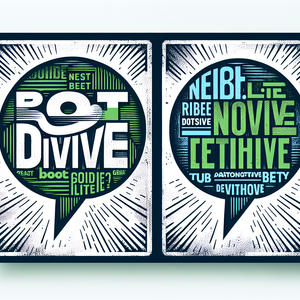UX Design Salary Trends: The Rise of Remote Work

The COVID-19 pandemic accelerated the trend of remote work, prompting companies to adapt to this new normal. UX designers, whose roles often allow for flexible work environments, have benefited significantly from this change. Organizations have recognized that remote work can enhance productivity and employee satisfaction, leading to a broader talent pool and increased job opportunities for UX designers. According to a recent survey by the UX Design Institute, over 70% of UX designers reported that they now have the option to work remotely. This shift has not only improved work-life balance for many but has also altered compensation structures across different regions and industries. Companies are now competing for top talent, further driving salary increases in a landscape where remote work is not just a temporary solution but a long-term strategy.
Regional Salary Variations
One of the most significant impacts of remote work on UX salaries is the geographical flexibility it offers. Traditionally, UX designers in major tech hubs like San Francisco or New York commanded higher salaries due to the cost of living and demand for talent. However, as remote work becomes normalized, companies are increasingly willing to hire designers from less expensive regions, often at competitive salaries. For instance, a UX designer based in Austin, Texas, might earn around $95,000 annually, while a counterpart in San Francisco could make upwards of $130,000 for similar work. The rise of remote opportunities has empowered designers to negotiate salaries based on their skills rather than their geographical location, leading to a more equitable pay structure across the industry. This shift has also allowed companies to tap into a diverse talent pool, bringing fresh perspectives and ideas to their teams.
Increased Demand for UX Skills
As companies recognize the importance of user-centered design in creating successful products, the demand for skilled UX designers has surged. This trend has been particularly pronounced in industries that have pivoted to digital-first strategies, such as e-commerce, healthcare, and education. A report from the Bureau of Labor Statistics projects that employment opportunities for UX designers will grow by 22% from 2020 to 2030, which is much faster than the average for all occupations. This increased demand is leading to more competitive salaries, as companies seek to attract and retain top talent in a remote workforce. Additionally, the rise of startup culture has resulted in a growing number of organizations investing in UX design, further driving the need for skilled professionals in this field.
Flexibility and Work-Life Balance
Another significant advantage of remote work for UX designers is the improved flexibility and work-life balance it offers. This has become an essential factor in salary negotiations, as many professionals prioritize a healthy work environment over high compensation. UX designers often have the option to create their schedules, allowing them to work during their most productive hours and manage personal responsibilities more effectively. For example, a designer may choose to work early in the morning or late at night, depending on their lifestyle and preferences. As a result, organizations that support remote work are also more likely to offer additional perks, such as flexible hours, wellness programs, and professional development opportunities, which can enhance overall job satisfaction and retention.
The rise of remote work has transformed the UX design landscape, influencing not only where designers work but also how they are compensated. As geographical barriers dissolve and demand for UX skills increases, designers are finding themselves in a favorable position to negotiate higher salaries and enjoy greater flexibility in their roles. The post-pandemic era offers an exciting opportunity for UX professionals to reshape their careers, ultimately leading to a more dynamic and equitable industry. As remote work continues to evolve, the future of UX design salaries looks promising. The combination of increased demand, geographical flexibility, and a focus on work-life balance creates an environment ripe for innovation and growth in this vital field. UX designers who adapt to these changes will not only thrive in their careers but also contribute to the ongoing evolution of user-centered design in a rapidly changing digital landscape.
Senior UX Researcher
Google, Facebook, Amazon, various tech startups
Core Responsibilities
Conduct user interviews, surveys, and usability tests to gather insights and inform design decisions.
Analyze qualitative and quantitative data to identify user needs and pain points.
Collaborate with cross-functional teams to integrate research findings into product development.
Required Skills
Proficiency in research methodologies and tools (e.g., UserTesting, Optimal Workshop).
Strong analytical skills with experience in data interpretation.
Excellent communication skills to present findings clearly to stakeholders.
Interaction Designer
Microsoft, Adobe, various design agencies
Core Responsibilities
Design wireframes, prototypes, and interactive mockups that enhance user experience.
Collaborate with UX researchers and visual designers to create user-centered designs.
Conduct usability testing to validate design decisions and iterate based on feedback.
Required Skills
Expertise in design tools such as Sketch, Figma, or Adobe XD.
Understanding of interaction design principles and user interface guidelines.
Ability to think critically about user flows and interactions.
UX/UI Designer
Shopify, Airbnb, design consultancies
Core Responsibilities
Create visually appealing and user-friendly interfaces for web and mobile applications.
Develop design systems and style guides to ensure consistency across products.
Work closely with developers to implement designs that meet technical constraints.
Required Skills
Strong proficiency in visual design software (e.g., Adobe Creative Suite, Figma).
Solid understanding of front-end development principles (HTML, CSS, JavaScript).
Ability to balance user needs with business goals.
Product Designer
Stripe, Slack, numerous startups
Core Responsibilities
Take ownership of the design process from ideation to implementation for various products.
Collaborate closely with product managers and engineers to define product vision and requirements.
Conduct competitive analysis and user testing to inform product direction and improvements.
Required Skills
Strong portfolio demonstrating end-to-end design experience.
Proficiency in prototyping tools (e.g., InVision, Framer).
Ability to work in an agile environment and adapt to changing priorities.
UX Design Manager
Atlassian, IBM, large tech firms
Core Responsibilities
Lead a team of UX designers and researchers, overseeing project timelines and deliverables.
Mentor team members and promote best practices in user-centered design.
Engage with stakeholders to align design strategies with business objectives.
Required Skills
Extensive experience in UX design, with a proven track record of managing projects and teams.
Strong leadership and communication skills.
Ability to advocate for user needs while balancing business goals.


